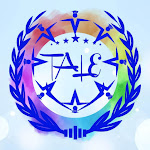1. 1.
EPC1 NOTES
Schema:
Definition:
Rumelhart says, All knowledge is packaged into units. These units are called
Schemata.
According
to Widdowson, Schema is Cognitive constructs which allow for the organization
of information in a long term memory.
A
mental framework or organized structure that helps individuals organize and
interpret information.
-
Types:
1. Linguistic Schema: Focuses on language and
sentence structure.
2. Formal Schema: Deals with the organization
and structure of information.
3. Content Schema: Relates to prior knowledge
and experiences.
-
Function:
- Facilitates understanding and
interpretation of new information.
- Influences how individuals perceive,
process, and remember information.
-
Role in Learning:
- Aids in comprehension by providing a
context for new information.
- Guides individuals in making sense of the
world around them.
-
Adaptation:
- Schemas can evolve and adapt based on new
experiences and learning.
- Existing schemas may be adjusted to
accommodate new information.
-
Influence on Memory:
- Schemas play a role in memory formation and
retrieval.
- Existing schemas can impact how new
information is stored and recalled.
-
Cognitive Shortcut:
- Schemas act as cognitive shortcuts, helping
in quicker information processing.
- They contribute to efficiency in
understanding and decision-making.
Understanding
the concept of schema is crucial in cognitive psychology as it sheds light on
how individuals organize and make sense of their experiences.
1.
Activation of Prior Knowledge:
- Schemas enable readers to activate their
existing knowledge relevant to the text.
- Prior knowledge provides a foundation for
understanding new information.
2.
Comprehension Aid:
- Schemas assist in comprehending text by
providing a mental framework.
- Readers use their knowledge structures to
interpret and make sense of the content.
3.
Prediction and Inference:
- Schemas help readers make predictions
about what might come next in the text.
- Inferences are drawn based on the
interplay between existing schemas and new information.
4.
Filling in Gaps:
- Readers use their schemas to fill in gaps
in the text, especially when explicit information is not provided.
- This
filling-in process relies on background knowledge.
5.
Contextual Understanding:
- Schemas contribute to understanding the
context of the text.
- Readers use their knowledge frameworks to
grasp the setting, characters, and relationships.
6.
Facilitation of Recall:
- Information that aligns with existing
schemas is often better retained and recalled.
- Schemas act as memory aids in the reading
and remembering of text.
7.
Adaptation and Reconstruction:
- Schemas can adapt and evolve as readers
encounter new information.
- Readers may reconstruct or modify existing
schemas based on their reading experiences.
8.
Efficient Processing:
- Schemas act as cognitive shortcuts,
allowing readers to process information more efficiently.
- Familiar structures reduce cognitive load
during the reading process.
Understanding
the role of schema in reading is crucial for educators and learners as it sheds
light on the cognitive processes involved in comprehending and assimilating
written information.
1.
Linguistic Schema:
- Focuses on language and how words are
used.
- Involves understanding grammar, syntax,
and semantics.
- Helps in comprehending the structure and
meaning of sentences.
2.
Formal Schema:
- Pertains to the organization and structure
of information.
- Involves recognizing patterns, layouts,
and overall document structure.
- Aids in understanding how information is
presented visually or hierarchically.
3.
Content Schema:
- Relates to prior knowledge and
experiences.
- Involves connecting new information with
existing knowledge.
- Helps in creating a framework for
understanding and interpreting content.
These
schemas collectively contribute to the comprehension and interpretation of
written or spoken communication.
প্রকার:
1. ভাষাগত স্কিমা: ভাষা এবং বাক্য গঠনের উপর দৃষ্টি নিবদ্ধ করে।
2. আনুষ্ঠানিক স্কিমা: তথ্যের সংগঠন এবং কাঠামো নিয়ে কাজ করে।
3. বিষয়বস্তু স্কিমা: পূর্বের জ্ঞান এবং অভিজ্ঞতার সাথে সম্পর্কিত।
- ফাংশন:
- নতুন তথ্য বোঝার এবং ব্যাখ্যা করার সুবিধা দেয়।
- ব্যক্তিরা কীভাবে তথ্য উপলব্ধি করে, প্রক্রিয়া করে এবং মনে রাখে তা প্রভাবিত করে।
- শেখার ভূমিকা:
- নতুন তথ্যের জন্য একটি প্রসঙ্গ প্রদান করে বোঝার ক্ষেত্রে সহায়তা করে।
- ব্যক্তিদের তাদের চারপাশের বিশ্ব বোঝাতে গাইড করে।
- অভিযোজন:
- নতুন অভিজ্ঞতা এবং শেখার উপর ভিত্তি করে স্কিমাগুলি বিকশিত এবং মানিয়ে নিতে পারে।
- বিদ্যমান স্কিমাগুলি নতুন তথ্য মিটমাট করার জন্য সামঞ্জস্য করা যেতে পারে।
- স্মৃতিশক্তির উপর প্রভাব:
- স্কিমা স্মৃতি গঠন এবং পুনরুদ্ধারের ভূমিকা পালন করে।
- বিদ্যমান স্কিমাগুলি কীভাবে নতুন তথ্য সংরক্ষণ এবং পুনরুদ্ধার করা হয় তা প্রভাবিত করতে পারে।
- জ্ঞানীয় শর্টকাট:
- স্কিমাগুলি জ্ঞানীয় শর্টকাট হিসাবে কাজ করে, দ্রুত তথ্য প্রক্রিয়াকরণে সহায়তা করে।
- তারা বোঝার এবং সিদ্ধান্ত নেওয়ার দক্ষতায় অবদান রাখে।
স্কিমার ধারণা বোঝা জ্ঞানীয় মনোবিজ্ঞানে অত্যন্ত গুরুত্বপূর্ণ কারণ এটি ব্যক্তিরা কীভাবে তাদের অভিজ্ঞতাকে সংগঠিত করে এবং উপলব্ধি করে তার উপর আলোকপাত করে।
1. পূর্ব জ্ঞান সক্রিয়করণ:
- স্কিমা পাঠকদের পাঠের সাথে প্রাসঙ্গিক তাদের বিদ্যমান জ্ঞান সক্রিয় করতে সক্ষম করে।
- পূর্বের জ্ঞান নতুন তথ্য বোঝার জন্য একটি ভিত্তি প্রদান করে।
2. বোঝার সাহায্য:
- স্কিমা একটি মানসিক কাঠামো প্রদান করে পাঠ্য বোঝার ক্ষেত্রে সহায়তা করে।
- পাঠকরা তাদের জ্ঞানের কাঠামো ব্যবহার করে বিষয়বস্তুকে ব্যাখ্যা করতে এবং বোঝায়।
3. ভবিষ্যদ্বাণী এবং অনুমান:
- স্কিমা পাঠকদের পাঠ্যের পরবর্তীতে কী হতে পারে সে সম্পর্কে ভবিষ্যদ্বাণী করতে সাহায্য করে।
- বিদ্যমান স্কিমা এবং নতুন তথ্যের মধ্যে ইন্টারপ্লে এর উপর ভিত্তি করে অনুমান করা হয়।
4. শূন্যস্থান পূরণ:
- পাঠকরা তাদের স্কিমা ব্যবহার করে পাঠ্যের ফাঁক পূরণ করতে, বিশেষ করে যখন স্পষ্ট তথ্য প্রদান করা হয় না।
- এই ফিলিং-ইন প্রক্রিয়া পটভূমি জ্ঞানের উপর নির্ভর করে।
5. প্রাসঙ্গিক বোঝাপড়া:
- স্কিমাগুলি পাঠ্যের প্রেক্ষাপট বুঝতে অবদান রাখে।
- পাঠকরা তাদের জ্ঞান কাঠামো ব্যবহার করে সেটিং, অক্ষর এবং সম্পর্ক বোঝার জন্য।
6. স্মরণের সুবিধা:
- বিদ্যমান স্কিমাগুলির সাথে সারিবদ্ধ তথ্যগুলি প্রায়শই ভালভাবে ধরে রাখা এবং প্রত্যাহার করা হয়।
- স্কিমা পাঠ্য পড়া এবং মনে রাখার ক্ষেত্রে মেমরি সহায়ক হিসাবে কাজ করে।
7. অভিযোজন এবং পুনর্গঠন:
- পাঠকরা নতুন তথ্যের মুখোমুখি হওয়ার সাথে সাথে স্কিমাগুলি মানিয়ে নিতে এবং বিকাশ করতে পারে।
- পাঠকরা তাদের পড়ার অভিজ্ঞতার উপর ভিত্তি করে বিদ্যমান স্কিমাগুলি পুনর্গঠন বা সংশোধন করতে পারে।
8. দক্ষ প্রক্রিয়াকরণ:
- স্কিমাগুলি জ্ঞানীয় শর্টকাট হিসাবে কাজ করে, পাঠকদের আরও দক্ষতার সাথে তথ্য প্রক্রিয়া করার অনুমতি দেয়।
- পরিচিত কাঠামো পড়ার প্রক্রিয়া চলাকালীন জ্ঞানীয় লোড হ্রাস করে।
পাঠে স্কিমার ভূমিকা বোঝা শিক্ষাবিদ এবং শিক্ষার্থীদের জন্য অত্যন্ত গুরুত্বপূর্ণ কারণ এটি লিখিত তথ্য বোঝা এবং একীভূত করার সাথে জড়িত জ্ঞানীয় প্রক্রিয়াগুলির উপর আলোকপাত করে।
1. ভাষাগত স্কিমা:
- ভাষা এবং কিভাবে শব্দ ব্যবহার করা হয় তার উপর ফোকাস করে।
- ব্যাকরণ, সিনট্যাক্স এবং শব্দার্থবিদ্যা বোঝার সাথে জড়িত।
- বাক্যের গঠন ও অর্থ বুঝতে সাহায্য করে।
2. আনুষ্ঠানিক স্কিমা:
- তথ্যের সংগঠন এবং কাঠামোর সাথে সম্পর্কিত।
- নিদর্শন, বিন্যাস, এবং সামগ্রিক নথির গঠন সনাক্তকরণ জড়িত।
- তথ্য কীভাবে দৃশ্যমান বা শ্রেণিবদ্ধভাবে উপস্থাপন করা হয় তা বুঝতে সহায়তা করে।
3. বিষয়বস্তু স্কিমা:
- পূর্বের জ্ঞান এবং অভিজ্ঞতার সাথে সম্পর্কিত।
- বিদ্যমান জ্ঞানের সাথে নতুন তথ্য সংযুক্ত করা জড়িত।
- বিষয়বস্তু বোঝা এবং ব্যাখ্যা করার জন্য একটি কাঠামো তৈরি করতে সহায়তা করে।
এই স্কিমাগুলি সম্মিলিতভাবে লিখিত বা কথ্য যোগাযোগের বোধগম্যতা এবং ব্যাখ্যায় অবদান রাখে।
Loud Reading:
Definition:
1.
Audible Presentation: Involves reading text aloud, expressing words verbally
for oneself or an audience.
Characteristics:
1.
Vocal Engagement: Requires the reader to articulate words, engaging the
auditory sense.
2.
Pronunciation Focus: Emphasizes correct pronunciation and fluency.
3.
Group Interaction: Suitable for group activities, fostering shared reading
experiences.
Advantages:
1.
Improved Pronunciation: Enhances language skills through audible practice.
2.
Enhanced Comprehension: Auditory engagement aids in better understanding and
retention.
3.
Effective for Teaching: Useful in educational settings for group learning and
discussion.
Disadvantages:
1.
Disturbance: May disrupt others in quiet environments.
2.
Limited Speed: Reading pace may be slower due to vocalization.
Silent Reading:
Definition:
1.
Internalized Processing: Reading without vocalization, involving silent
comprehension of written text.
Characteristics:
1.
Quiet Engagement: Involves internalizing the text without audible expression.
2.
Visual Focus: Emphasizes visual processing, engaging the reader's eyes more
directly.
3.
Individual Activity: Often done in solitude, providing a personal reading
experience.
Advantages:
1.
Increased Speed: Typically allows for faster reading as there is no need to
vocalize.
2.
Focused Comprehension: Enables deep concentration on understanding the content.
3.
Versatility: Suitable for various settings, including public spaces where quiet
is necessary.
Disadvantages:
1.
Limited Pronunciation Practice: Lacks the vocal element, potentially impacting
language development.
2.
Isolation: May be less engaging in group settings, limiting shared experiences.
সংজ্ঞা:
1. শ্রবণযোগ্য উপস্থাপনা: উচ্চস্বরে পাঠ্য পড়া, নিজের বা শ্রোতার জন্য মৌখিকভাবে শব্দ প্রকাশ করা জড়িত।
বৈশিষ্ট্য:
1. ভোকাল ব্যস্ততা: পাঠককে শব্দ উচ্চারণ করতে হবে, শ্রবণশক্তিকে আকর্ষিত করতে হবে।
2. উচ্চারণ ফোকাস: সঠিক উচ্চারণ এবং সাবলীলতার উপর জোর দেয়।
3. গ্রুপ ইন্টারঅ্যাকশন: গ্রুপ ক্রিয়াকলাপগুলির জন্য উপযুক্ত, ভাগ করা পড়ার অভিজ্ঞতাকে উত্সাহিত করা।
সুবিধাদি:
1. উন্নত উচ্চারণ: শ্রুতিমধুর অনুশীলনের মাধ্যমে ভাষার দক্ষতা বৃদ্ধি করে।
2. বর্ধিত বোধগম্যতা: শ্রবণগত ব্যস্ততা আরও ভাল বোঝার এবং ধরে রাখতে সহায়তা করে।
3. শিক্ষাদানের জন্য কার্যকরী: দলগত শিক্ষা এবং আলোচনার জন্য শিক্ষামূলক সেটিংসে দরকারী।
অসুবিধা:
1. ব্যাঘাত: শান্ত পরিবেশে অন্যদের ব্যাহত করতে পারে।
2. সীমিত গতি: কণ্ঠের কারণে পড়ার গতি ধীর হতে পারে।
নীরব পড়া:
সংজ্ঞা:
1. অভ্যন্তরীণ প্রক্রিয়াকরণ: কণ্ঠস্বর ছাড়াই পড়া, লিখিত পাঠ্যের নীরব বোধগম্যতা জড়িত।
বৈশিষ্ট্য:
1. শান্ত ব্যস্ততা: শ্রবণযোগ্য অভিব্যক্তি ছাড়াই পাঠ্যকে অভ্যন্তরীণ করা জড়িত।
2. ভিজ্যুয়াল ফোকাস: ভিজ্যুয়াল প্রক্রিয়াকরণের উপর জোর দেয়, পাঠকের চোখকে আরও সরাসরি আকৃষ্ট করে।
3. ব্যক্তিগত কার্যকলাপ: প্রায়শই নির্জনে করা হয়, একটি ব্যক্তিগত পড়ার অভিজ্ঞতা প্রদান করে।
সুবিধাদি:
1. বর্ধিত গতি: সাধারণত দ্রুত পড়ার জন্য অনুমতি দেয় কারণ সেখানে কণ্ঠ দেওয়ার প্রয়োজন নেই।
2. ফোকাসড কম্প্রিহেনশন: বিষয়বস্তু বোঝার উপর গভীর মনোযোগ সক্ষম করে।
3. বহুমুখিতা: বিভিন্ন সেটিংসের জন্য উপযুক্ত, যেখানে নীরব থাকা প্রয়োজন এমন পাবলিক স্পেস সহ।
অসুবিধা:
1. সীমিত উচ্চারণ অনুশীলন: কণ্ঠ্য উপাদানের অভাব, সম্ভাব্যভাবে ভাষার বিকাশকে প্রভাবিত করে।
2. বিচ্ছিন্নতা: গ্রুপ সেটিংসে কম জড়িত হতে পারে, ভাগ করা অভিজ্ঞতা সীমিত করে।
Skimming:
1.
Definition:
- Skimming is a reading technique that
involves quickly glancing over a text to get a general sense of its content
without reading every word.
2.
Characteristics:
- Involves reading headings, subheadings,
and the first and last sentences of paragraphs.
- Focuses on bold or italicized text.
- Aims to identify the main idea and key
points.
- Rapid reading for time-saving.
3.
Advantages:
- Efficient time management by quickly
assessing a text's relevance.
- Helps in identifying main ideas and
overall themes.
- Useful for previewing lengthy materials
before in-depth reading.
4.
Disadvantages:
- May miss nuanced details and specific
information.
- Limited depth of understanding compared to
thorough reading.
সংজ্ঞা:
- স্কিমিং হল একটি পড়ার কৌশল যাতে প্রতিটি শব্দ না পড়েই এর বিষয়বস্তুর সাধারণ ধারণা পেতে একটি পাঠ্যের উপর দ্রুত নজর দেওয়া হয়।
2. বৈশিষ্ট্য:
- শিরোনাম, উপশিরোনাম এবং অনুচ্ছেদের প্রথম এবং শেষ বাক্য পড়া জড়িত।
- বোল্ড বা তির্যক লেখার উপর ফোকাস করে।
- মূল ধারণা এবং মূল পয়েন্টগুলি সনাক্ত করার লক্ষ্য।
- সময় বাঁচানোর জন্য দ্রুত পড়া।
3. সুবিধা:
- একটি পাঠ্যের প্রাসঙ্গিকতা দ্রুত মূল্যায়ন করে দক্ষ সময় ব্যবস্থাপনা।
- প্রধান ধারণা এবং সামগ্রিক থিম সনাক্ত করতে সাহায্য করে।
- গভীরভাবে পড়ার আগে দীর্ঘ উপকরণগুলির পূর্বরূপ দেখার জন্য দরকারী।
4. অসুবিধা:
- সংক্ষিপ্ত বিবরণ এবং নির্দিষ্ট তথ্য মিস করতে পারে।
- পুঙ্খানুপুঙ্খভাবে পড়ার তুলনায় বোঝার গভীরতা সীমিত।
Scanning:
- Scanning is a reading technique used to
locate specific information by quickly moving the eyes over the text in a
systematic way.
2.
Characteristics:
- Involves searching for keywords, numbers,
names, or specific terms.
- A more focused and targeted reading
approach.
- Faster than regular reading but slower
than skimming.
3.
Advantages:
- Efficient for finding answers to specific
questions or extracting particular details.
- Valuable in situations where time is
limited.
- Enhances precision in information
retrieval.
4.
Disadvantages:
- May overlook contextual understanding or
miss broader themes.
- Not suitable for gaining a comprehensive
understanding of the overall content.
In
summary, skimming and scanning are strategic reading approaches with distinct
purposes. Skimming provides a quick overview, while scanning is directed
towards pinpointing specific information. Both techniques offer advantages in
terms of time efficiency but come with the trade-off of potentially missing
nuanced details or comprehensive understanding.











No comments:
Post a Comment